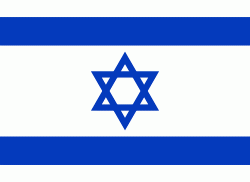Tiberias
Tiberias (טְבֶרְיָה, ; طبريا) is an Israeli city on the western shore of the Sea of Galilee. A major Jewish center during Late Antiquity, it has been considered since the 16th century one of Judaism's Four Holy Cities, along with Jerusalem, Hebron, and Safed. In, it had a population of.
Tiberias was founded circa 20 CE by Herod Antipas and was named after Roman emperor Tiberius. It became a major political and religious hub of the Jews in the Land of Israel after the destruction of Jerusalem and the desolation of Judea during the Jewish–Roman wars. From the time of the second through the tenth centuries CE, Tiberias was the largest Jewish city in the Galilee, and much of the Mishna and the Jerusalem Talmud were compiled there. Tiberias flourished during the early Islamic period, when it served as the capital of Jund al-Urdunn and became a multi-cultural trading center. The city slipped in importance following several earthquakes, foreign incursions, and after the Mamluks turned Safed into the capital of Galilee. The city was greatly damaged by an earthquake in 1837, after which it was rebuilt, and it grew steadily following the Zionist Aliyah in the 1880s.
In early modern times, Tiberias was a mixed city; under British rule it had a majority Jewish population, but with a significant Arab community. During the 1947–1948 civil war in Mandatory Palestine, Palestinian Arab residents of Tiberias besieged its Jewish quarter. The city was then captured by the Haganah, and British troops evacuated the entire Palestinian Arab population. After the war ended, the new Israeli authorities destroyed the Old City of Tiberias. A large number of Jewish immigrants to Israel subsequently settled in Tiberias, such that today the city has an almost exclusively Jewish population.
Today, Tiberias is an important tourist center due to its proximity to the Sea of Galilee and religious sanctity to Judaism and Christianity. The city also serves as a regional industrial and commercial center. Its immediate neighbour to the south, Hammat Tiberias, which is now part of modern Tiberias, has been known for its hot springs, believed to cure skin and other ailments, for some two thousand years.
* See Diocese of Tiberias for ecclesiastical history
Tiberias was founded circa 20 CE by Herod Antipas and was named after Roman emperor Tiberius. It became a major political and religious hub of the Jews in the Land of Israel after the destruction of Jerusalem and the desolation of Judea during the Jewish–Roman wars. From the time of the second through the tenth centuries CE, Tiberias was the largest Jewish city in the Galilee, and much of the Mishna and the Jerusalem Talmud were compiled there. Tiberias flourished during the early Islamic period, when it served as the capital of Jund al-Urdunn and became a multi-cultural trading center. The city slipped in importance following several earthquakes, foreign incursions, and after the Mamluks turned Safed into the capital of Galilee. The city was greatly damaged by an earthquake in 1837, after which it was rebuilt, and it grew steadily following the Zionist Aliyah in the 1880s.
In early modern times, Tiberias was a mixed city; under British rule it had a majority Jewish population, but with a significant Arab community. During the 1947–1948 civil war in Mandatory Palestine, Palestinian Arab residents of Tiberias besieged its Jewish quarter. The city was then captured by the Haganah, and British troops evacuated the entire Palestinian Arab population. After the war ended, the new Israeli authorities destroyed the Old City of Tiberias. A large number of Jewish immigrants to Israel subsequently settled in Tiberias, such that today the city has an almost exclusively Jewish population.
Today, Tiberias is an important tourist center due to its proximity to the Sea of Galilee and religious sanctity to Judaism and Christianity. The city also serves as a regional industrial and commercial center. Its immediate neighbour to the south, Hammat Tiberias, which is now part of modern Tiberias, has been known for its hot springs, believed to cure skin and other ailments, for some two thousand years.
* See Diocese of Tiberias for ecclesiastical history
Map - Tiberias
Map
Country - Israel
 |
 |
| Flag of Israel | |
The Southern Levant, of which modern Israel forms a part, is on the land corridor used by hominins to emerge from Africa and has some of the first signs of human habitation. In ancient history, it was where Canaanite and later Israelite civilizations developed, and where the kingdoms of Israel and Judah emerged, before falling, respectively, to the Neo-Assyrian Empire and Neo-Babylonian Empire. During the classical era, the region was ruled by the Achaemenid, Macedonian, Ptolemaic and Seleucid empires. The Maccabean Revolt gave rise to the Hasmonean kingdom, before the Roman Republic took control a century later. The subsequent Jewish–Roman wars resulted in widespread destruction and displacement across Judea. Under Byzantine rule, Christians replaced Jews as the majority. From the 7th century, Muslim rule was established under the Rashidun, Umayyad, Abbasid and Fatimid caliphates. In the 11th century, the First Crusade asserted European Christian rule under the Crusader states. For the next two centuries, the region saw continuous wars between the Crusaders and the Ayyubids, ending when the Crusaders lost their last territorial possessions to the Mamluk Sultanate, which ceded the territory to the Ottoman Empire at the onset of the 16th century.
Currency / Language
| ISO | Currency | Symbol | Significant figures |
|---|---|---|---|
| ILS | Israeli new shekel | ₪ | 2 |
| ISO | Language |
|---|---|
| AR | Arabic language |
| EN | English language |
| HE | Hebrew language |















